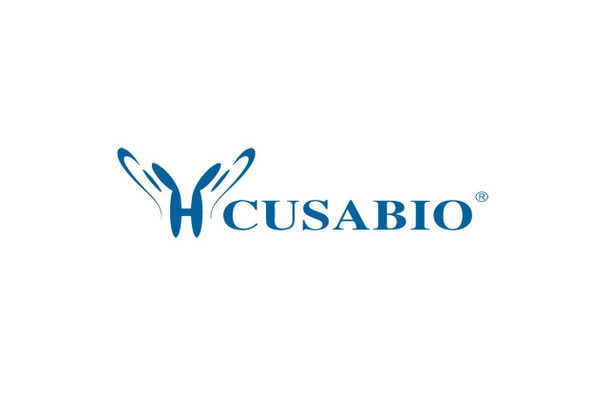Cusabio Human Recombinants
Recombinant Human S-phase kinase-associated protein 2 (SKP2) | CSB-EP613392HU
- SKU:
- CSB-EP613392HU
- Availability:
- 3 - 7 Working Days
Description
Recombinant Human S-phase kinase-associated protein 2 (SKP2) | CSB-EP613392HU | Cusabio
Alternative Name(s): Cyclin-A/CDK2-associated protein p45F-box protein Skp2F-box/LRR-repeat protein 1p45skp2
Gene Names: SKP2
Research Areas: Cancer
Organism: Homo sapiens (Human)
AA Sequence: MHRKHLQEIPDLSSNVATSFTWGWDSSKTSELLSGMGVSALEKEEPDSENIPQELLSNLGHPESPPRKRLKSKGSDKDFVIVRRPKLNRENFPGVSWDSLPDELLLGIFSCLCLPELLKVSGVCKRWYRLASDESLWQTLDLTGKNLHPDVTGRLLSQGVIAFRCPRSFMDQPLAEHFSPFRVQHMDLSNSVIEVSTLHGILSQCSKLQNLSLEGLRLSDPIVNTLAKNSNLVRLNLSGCSGFSEFALQTLLSSCSRLDELNLSWCFDFTEKHVQVAVAHVSETITQLNLSGYRKNLQKSDLSTLVRRCPNLVHLDLSDSVMLKNDCFQEFFQLNYLQHLSLSRCYDIIPETLLELGEIPTLKTLQVFGIVPDGTLQLLKEALPHLQINCSHFTTIARPTIGNKKNQEIWGIKCRLTLQKPSCL
Source: E.coli
Tag Info: N-terminal 6xHis-SUMO-tagged
Expression Region: 1-424aa
Sequence Info: Full Length
MW: 63.8 kDa
Purity: Greater than 90% as determined by SDS-PAGE.
Relevance: Substrate recognition component of a SCF (SKP1-CUL1-F-box protein) E3 ubiquitin-protein ligase complex which mediates the ubiquitination and subsequent proteasomal degradation of target proteins involved in cell cycle progression, signal transduction and transcription. Specifically recognizes phosphorylated CDKN1B/p27kip and is involved in regulation of G1/S transition. Degradation of CDKN1B/p27kip also requires CKS1. Recognizes target proteins ORC1, CDT1, RBL2, KMT2A/MLL1, CDK9, RAG2, FOXO1, UBP43, and probably MYC, TOB1 and TAL1. Degradation of TAL1 also requires STUB1. Recognizes CDKN1A in association with CCNE1 or CCNE2 and CDK2. Promotes ubiquitination and destruction of CDH1 in a CK1-Dependent Manner, thereby regulating cell migration
Reference: Acetylation-dependent regulation of Skp2 function.Inuzuka H., Gao D., Finley L.W., Yang W., Wan L., Fukushima H., Chin Y.R., Zhai B., Shaik S., Lau A.W., Wang Z., Gygi S.P., Nakayama K., Teruya-Feldstein J., Toker A., Haigis M.C., Pandolfi P.P., Wei W.Cell 150:179-193(2012)
Storage: The shelf life is related to many factors, storage state, buffer ingredients, storage temperature and the stability of the protein itself. Generally, the shelf life of liquid form is 6 months at -20?/-80?. The shelf life of lyophilized form is 12 months at -20?/-80?.
Notes: Repeated freezing and thawing is not recommended. Store working aliquots at 4? for up to one week.
Function: Substrate recognition component of a SCF (SKP1-CUL1-F-box protein) E3 ubiquitin-protein ligase complex which mediates the ubiquitination and subsequent proteasomal degradation of target proteins involved in cell cycle progression, signal transduction and transcription. Specifically recognizes phosphorylated CDKN1B/p27kip and is involved in regulation of G1/S transition. Degradation of CDKN1B/p27kip also requires CKS1. Recognizes target proteins ORC1, CDT1, RBL2, KMT2A/MLL1, CDK9, RAG2, FOXO1, UBP43, and probably MYC, TOB1 and TAL1. Degradation of TAL1 also requires STUB1. Recognizes CDKN1A in association with CCNE1 or CCNE2 and CDK2. Promotes ubiquitination and destruction of CDH1 in a CK1-Dependent Manner, thereby regulating cell migration.
Involvement in disease:
Subcellular Location: Cytoplasm, Nucleus
Protein Families:
Tissue Specificity:
Paythway: mTORsignalingpathway
Form: Liquid or Lyophilized powder
Buffer: If the delivery form is liquid, the default storage buffer is Tris/PBS-based buffer, 5%-50% glycerol. If the delivery form is lyophilized powder, the buffer before lyophilization is Tris/PBS-based buffer, 6% Trehalose, pH 8.0.
Reconstitution: We recommend that this vial be briefly centrifuged prior to opening to bring the contents to the bottom. Please reconstitute protein in deionized sterile water to a concentration of 0.1-1.0 mg/mL.We recommend to add 5-50% of glycerol (final concentration) and aliquot for long-term storage at -20?/-80?. Our default final concentration of glycerol is 50%. Customers could use it as reference.
Uniprot ID: Q13309
HGNC Database Link: HGNC
UniGene Database Link: UniGene
KEGG Database Link: KEGG
STRING Database Link: STRING
OMIM Database Link: OMIM










